7 facts about a sumptuous English palace on the Black Sea coast
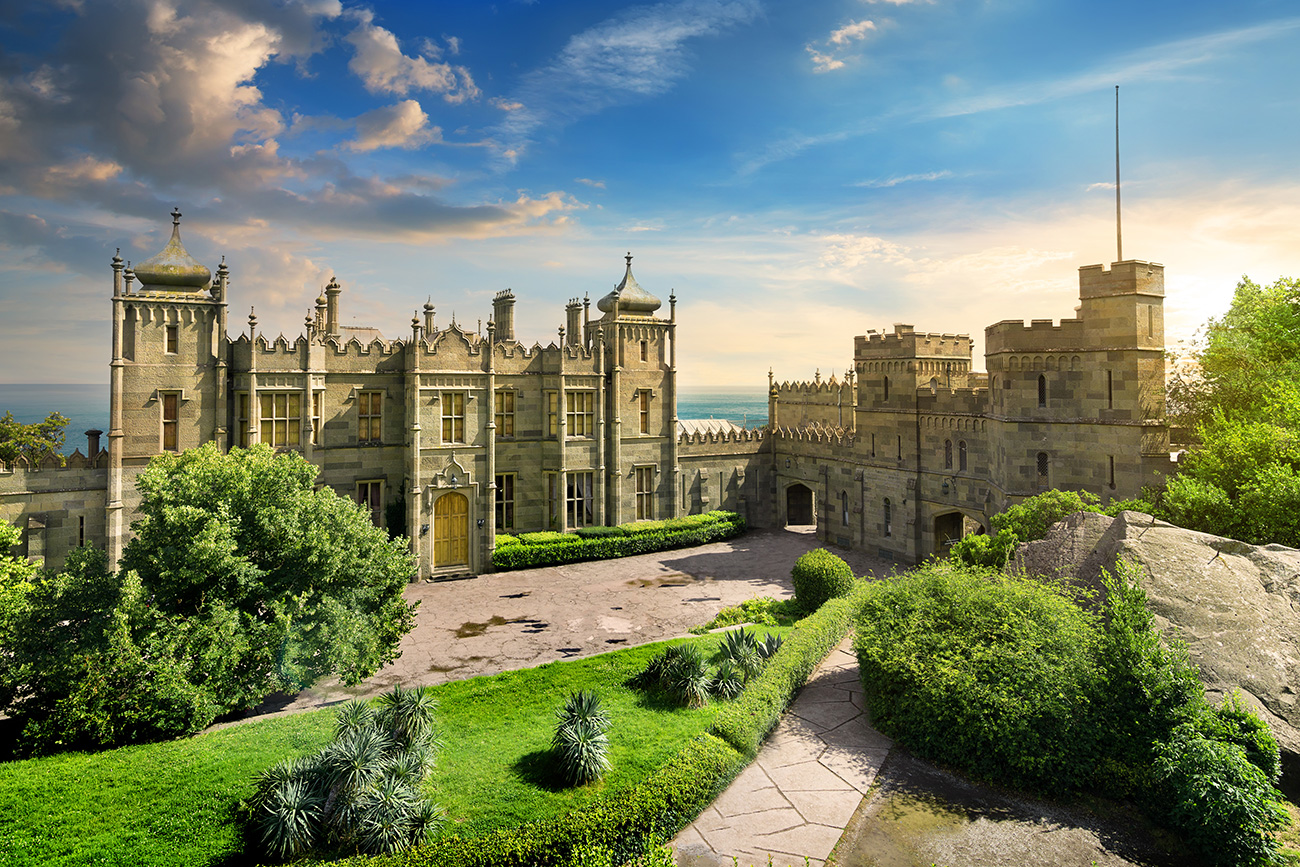
Vorontsov Palace in Alupka, Crimea.
Legion Media Vorontsov Palace in Alupka, Crimea. Source: Legion Media
Vorontsov Palace in Alupka, Crimea. Source: Legion Media
1. It was built to the design of the British Royal Court architect
The first owner of the palace, Governor-General of Novorossiya Count Vorontsov, was an Anglophile – the son of the Russian ambassador, he spent his childhood and youth in London. Choosing to have his summer residence in Crimea built in the English style, he invited Edward Blore, an architect and antiquarian famous for his work for the British Royal Court. Blore designed the main façade of Buckingham Palace, completing work begun by John Nash, who had resigned. Blore was also involved in the reconstruction of St. James's Palace in London and he built the Salisbury Tower at Windsor Castle. However, he never visited Crimea and it was his assistant William Hunt who carried out the project.
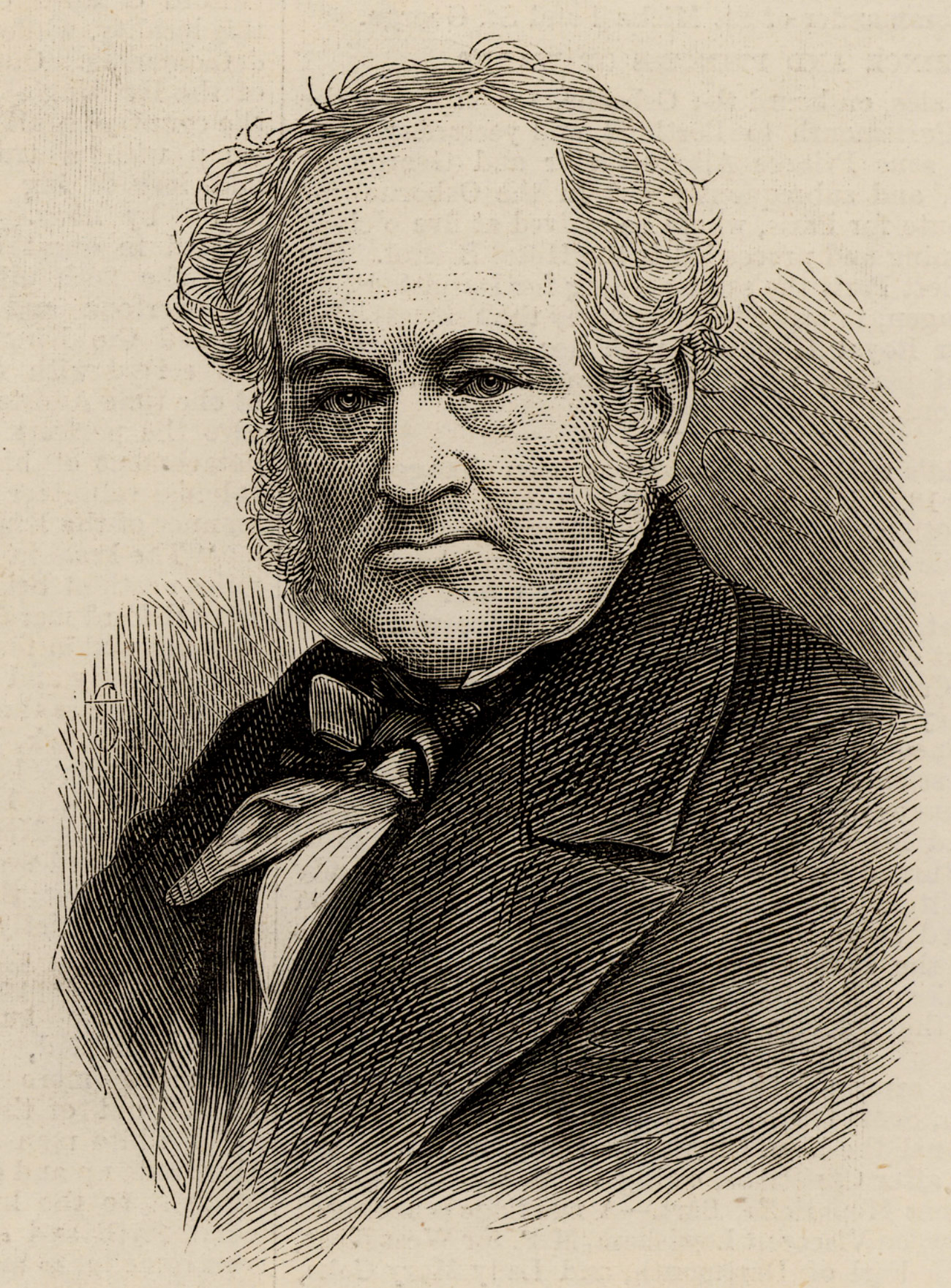 Edward Blore (1787-1879). Source: Global Look Press
Edward Blore (1787-1879). Source: Global Look Press
2. The architecture and interiors bring together different styles and eras
The construction of the palace took 20 years – from 1828 to 1848. Eventually a castle consisting of five wings and 150 rooms emerged at the foot of the Ai-Petri mountain on the coast near Yalta. Apparently inspired by genuine English castles that had been completed by successive generations, Blore used elements from different eras – there are inaccessible medieval towers next to glazed bay windows, and high chimneys with decorative elements, as well as large Tudor-style windows.
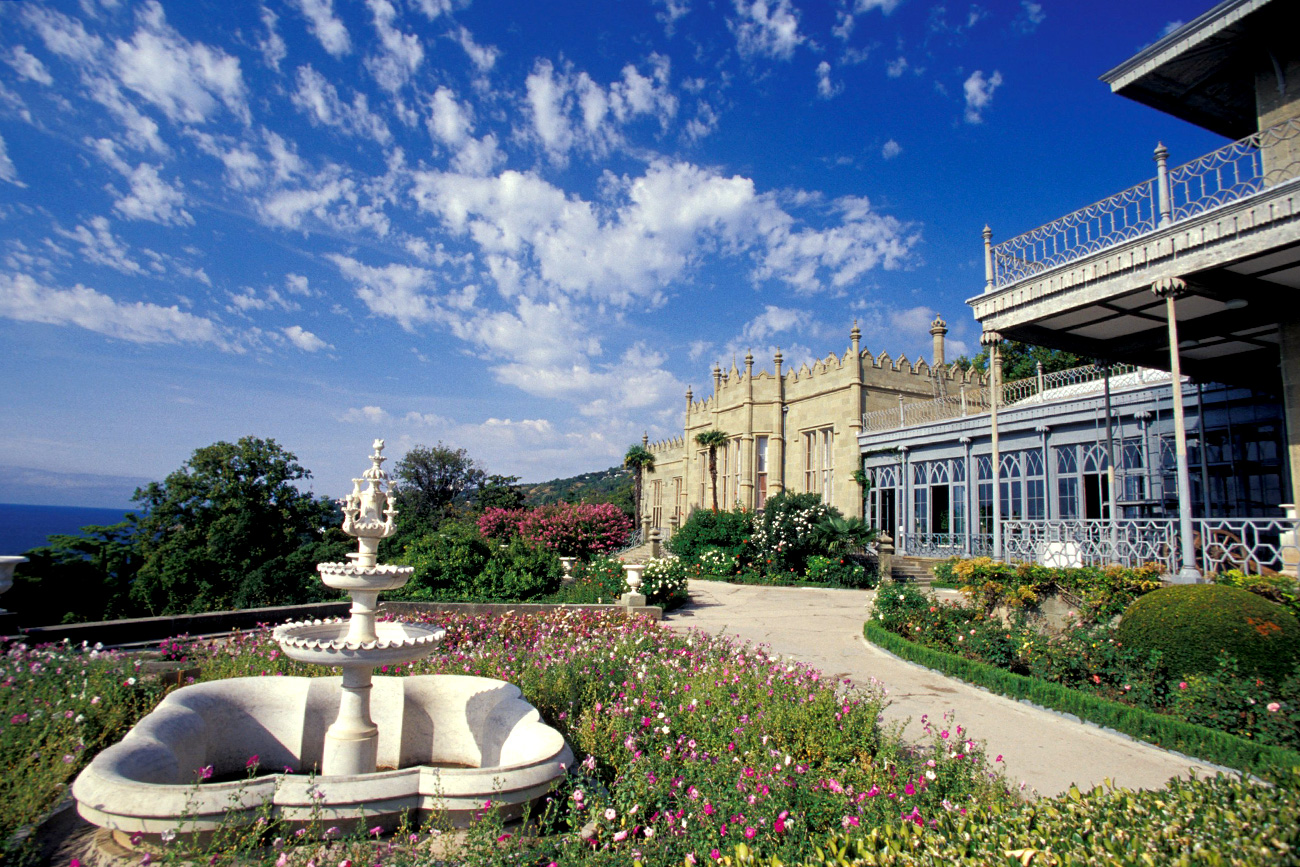 An extensive garden with fountains and statues. Source: Danita Delimont/Global Look Press
An extensive garden with fountains and statues. Source: Danita Delimont/Global Look Press
In the 19th century the Turkish influence could still be felt in Crimea and the architect added Moorish elements – a horseshoe arch over the south gate and towers that look like minarets.
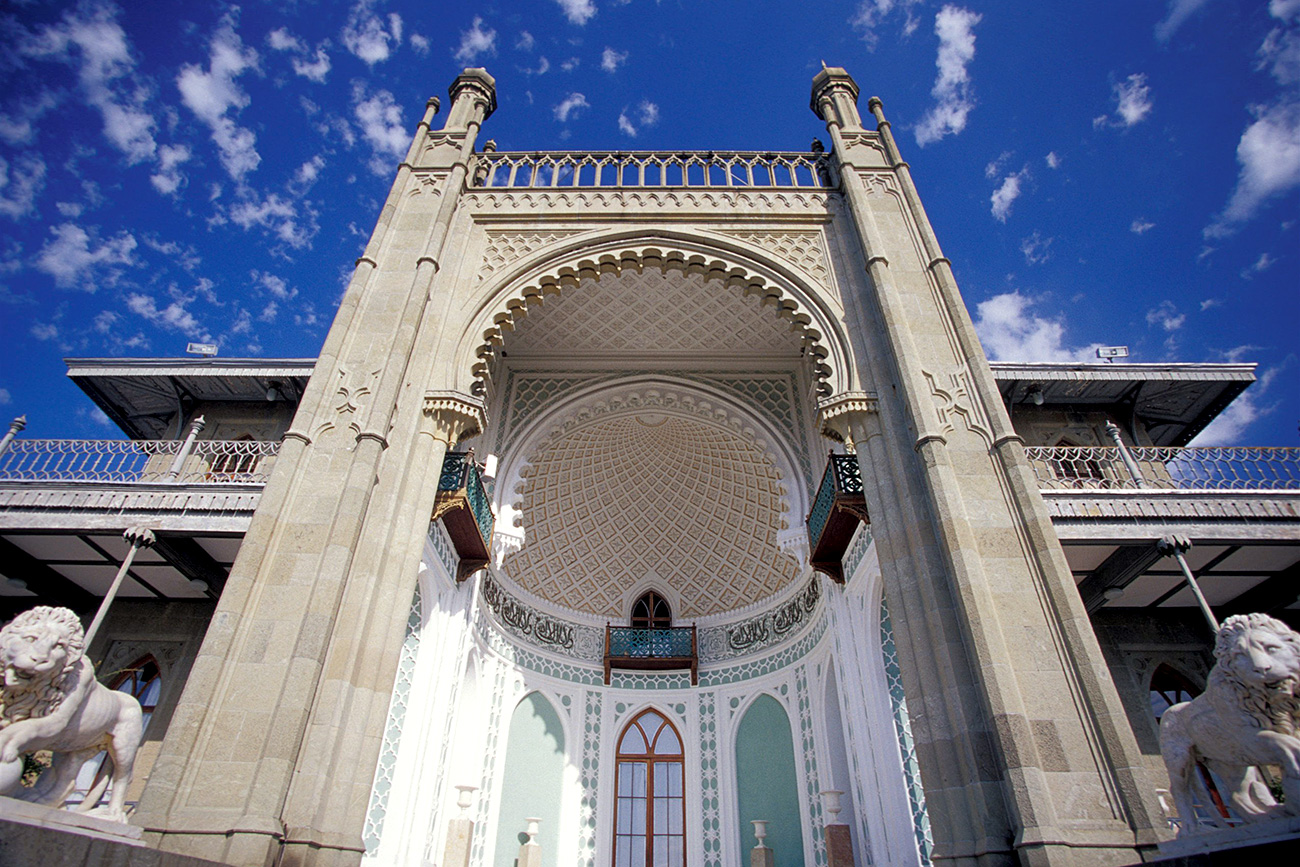 Moorish style palace as seen from garden. Source: Danita Delimont/Global Look Press
Moorish style palace as seen from garden. Source: Danita Delimont/Global Look Press
3. The sculptures for the main staircase were commissioned in Italy
One of the most spectacular architectural features is the staircase of the southern facade that leads to the park that descends to the sea.
 Giovanni Bonanni's marble lions. Source: Server Amzayev/Global Look Press
Giovanni Bonanni's marble lions. Source: Server Amzayev/Global Look Press
Its main decoration is a set of Carrara marble lions, ordered from the workshop of Italian sculptor Giovanni Bonanni. The master himself carved a charming sleeping lion but he entrusted his assistants with carving a waking lion and wide-awake lions.
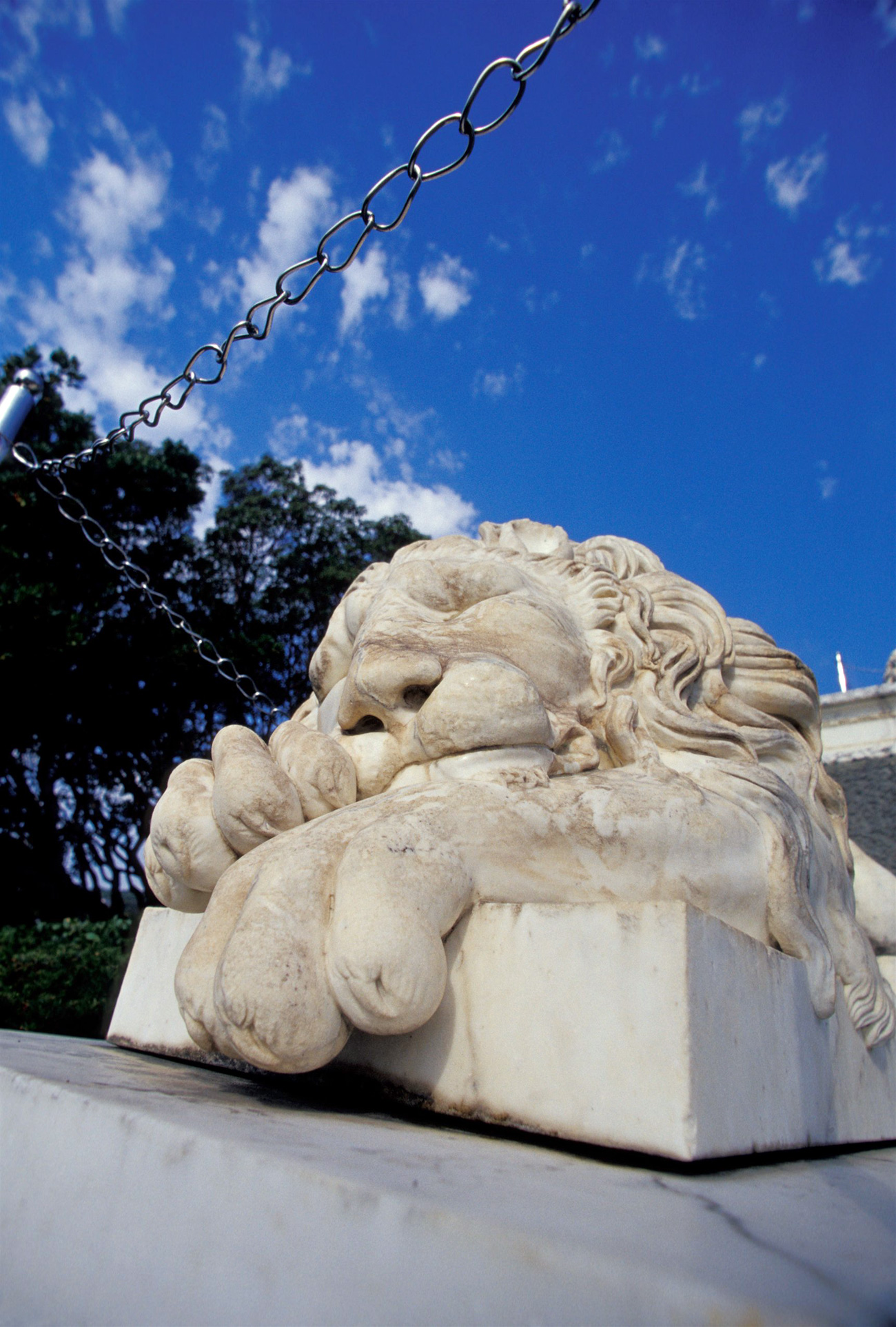 Sleeping lion stone statue. Source: Danita Delimont/Global Look Press
Sleeping lion stone statue. Source: Danita Delimont/Global Look Press
4. The landscaped park was laid out by a German botanist
A large landscaped park was no less important a part of the estate than the palace – the laying out of the park started two years prior to the construction of the house.
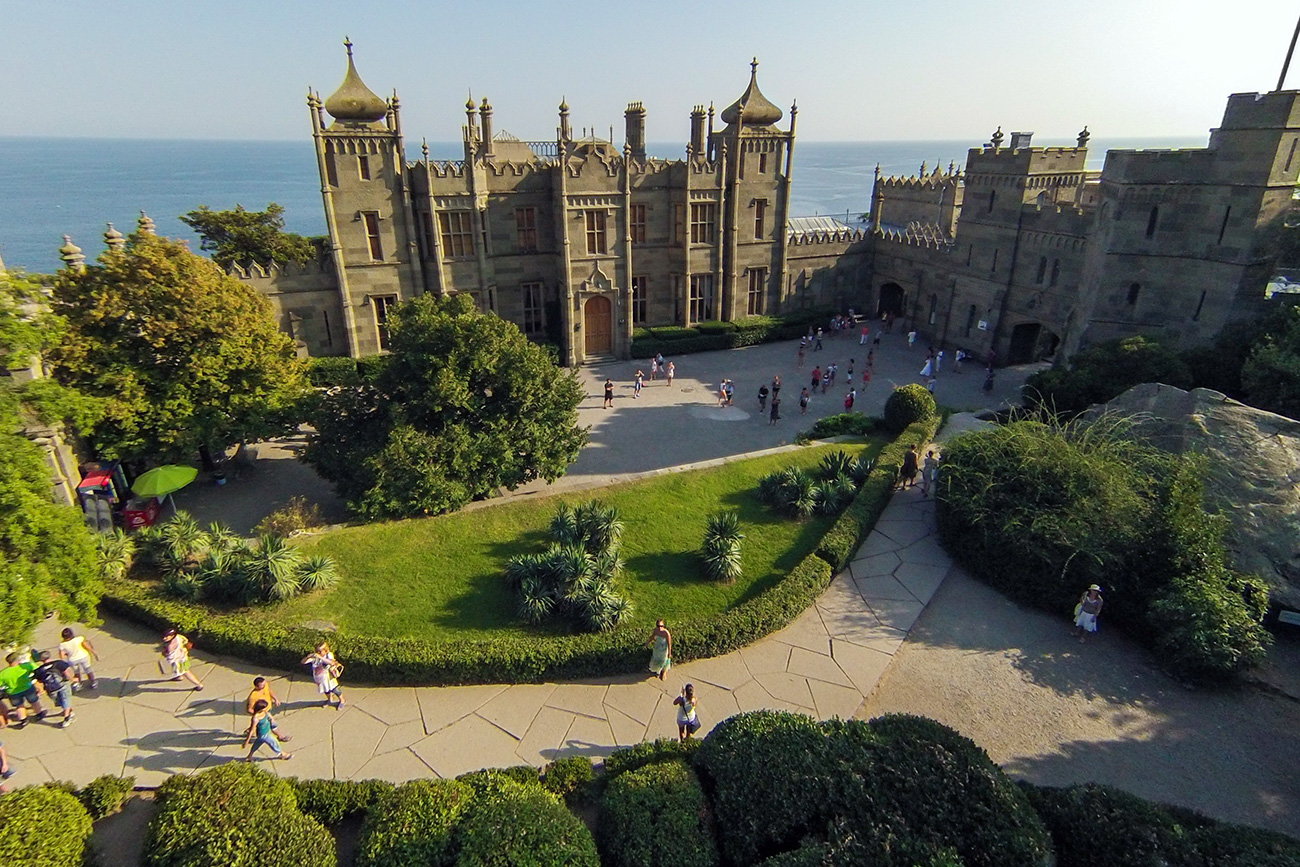 Tourists in the Vorontsov Palace. Source: Legion Media
Tourists in the Vorontsov Palace. Source: Legion Media
Acclaimed German landscape gardener Carolus Keebach worked on the park. Having been tasked by Vorontsov to create "a winter garden in the open air", he planted exotic trees and plants, making sure that they took root in the new environment. All new plants at the nearby Imperial Nikitsky Botanical Gardens immediately appeared in the garden of Count Vorontsov.
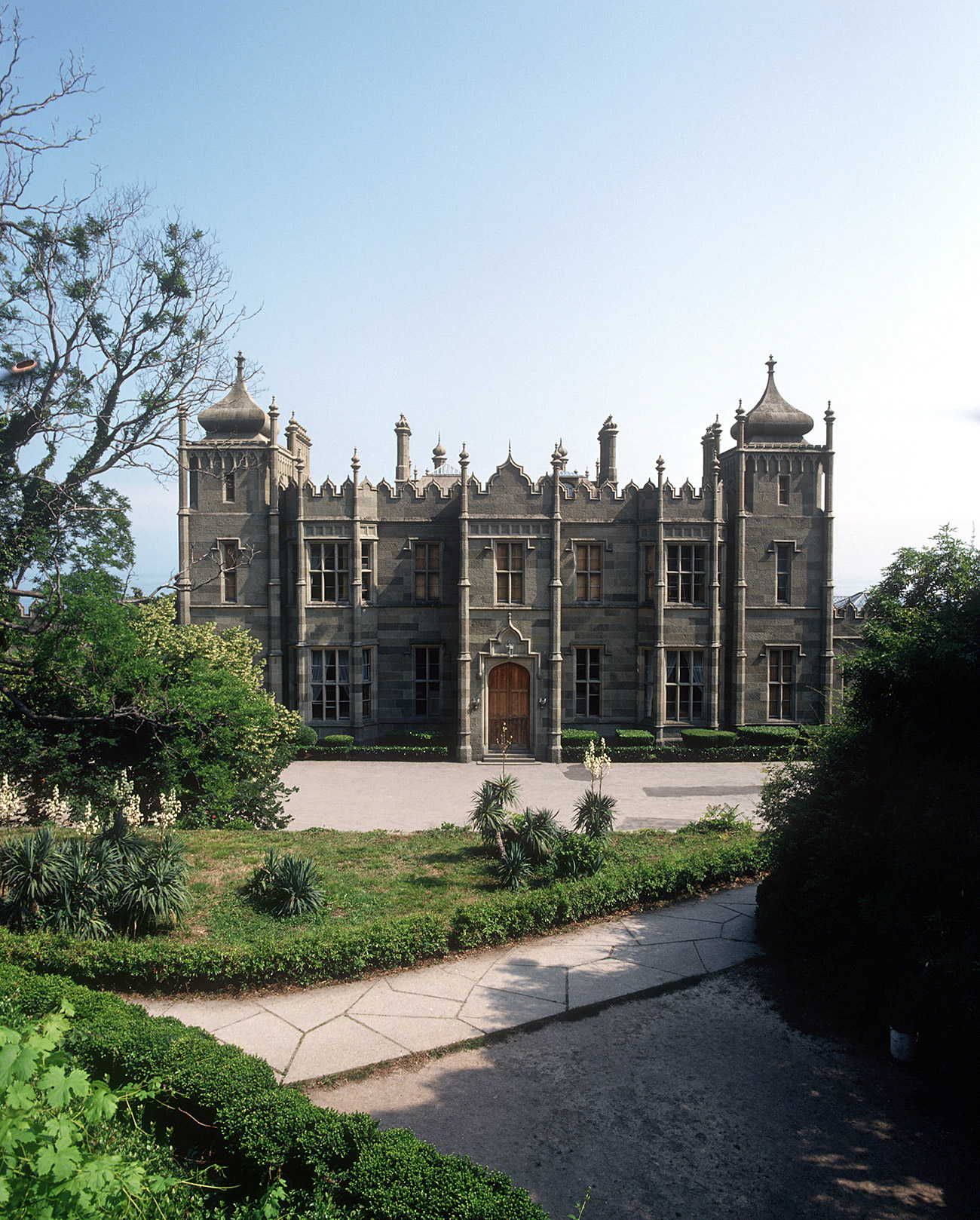 North facade of the palace. Source: Vadim Nekrasov/Global Look Press
North facade of the palace. Source: Vadim Nekrasov/Global Look Press
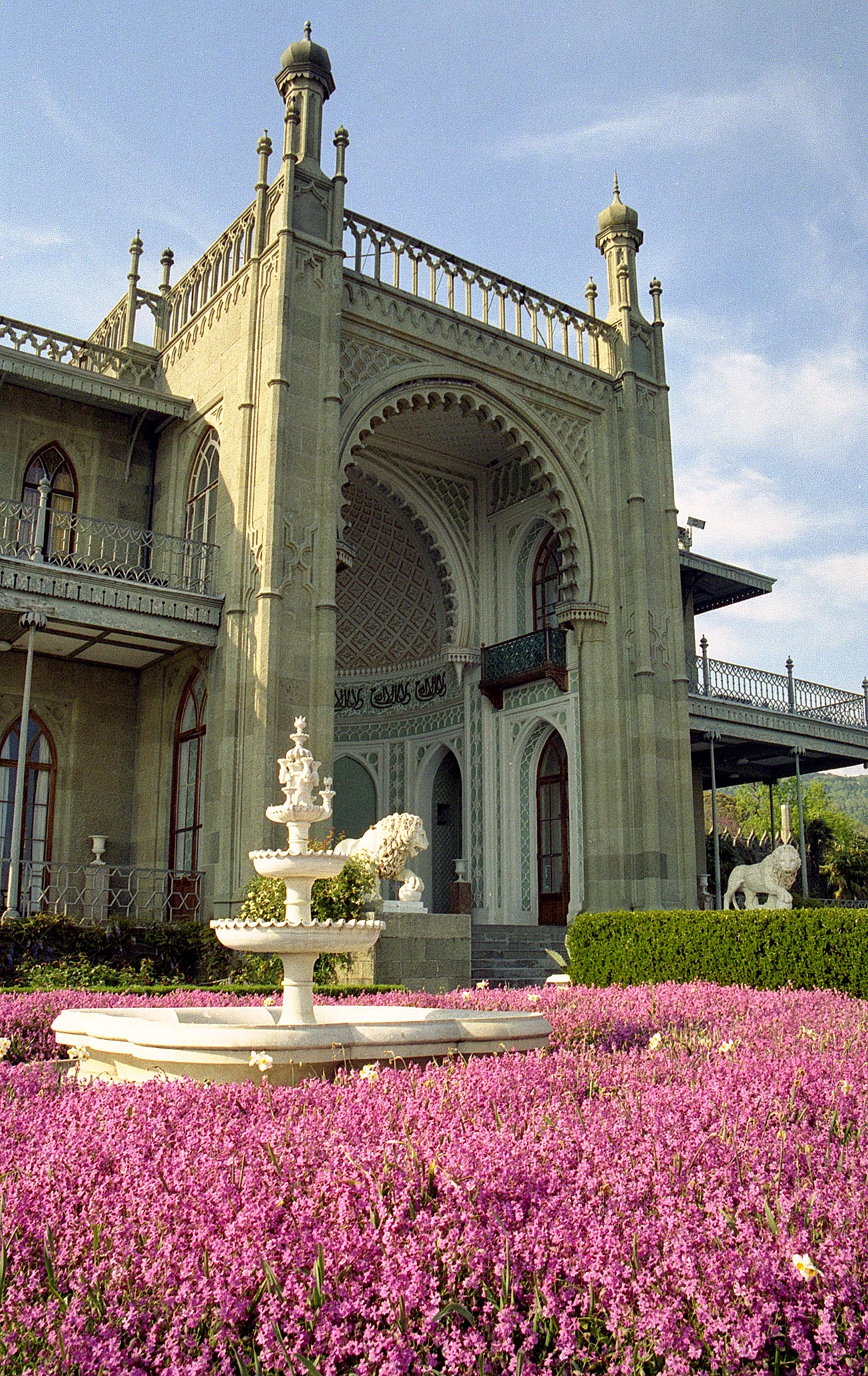 South facade of the palace. Source: Server Amzayev/Global Look Press
South facade of the palace. Source: Server Amzayev/Global Look Press
5. The mid-19th century interiors survive unchanged
Despite the turbulent history of the 20th century, the principal interiors of the palace are virtually untouched. The mid-19th century was an eclectic period and the rooms were decorated in different historical styles. The Hall with its wooden ceiling, massive armchairs and family portraits is reminiscent of English castle traditions, while the walls in the Chinese Study are covered with mats of fine rice straw.
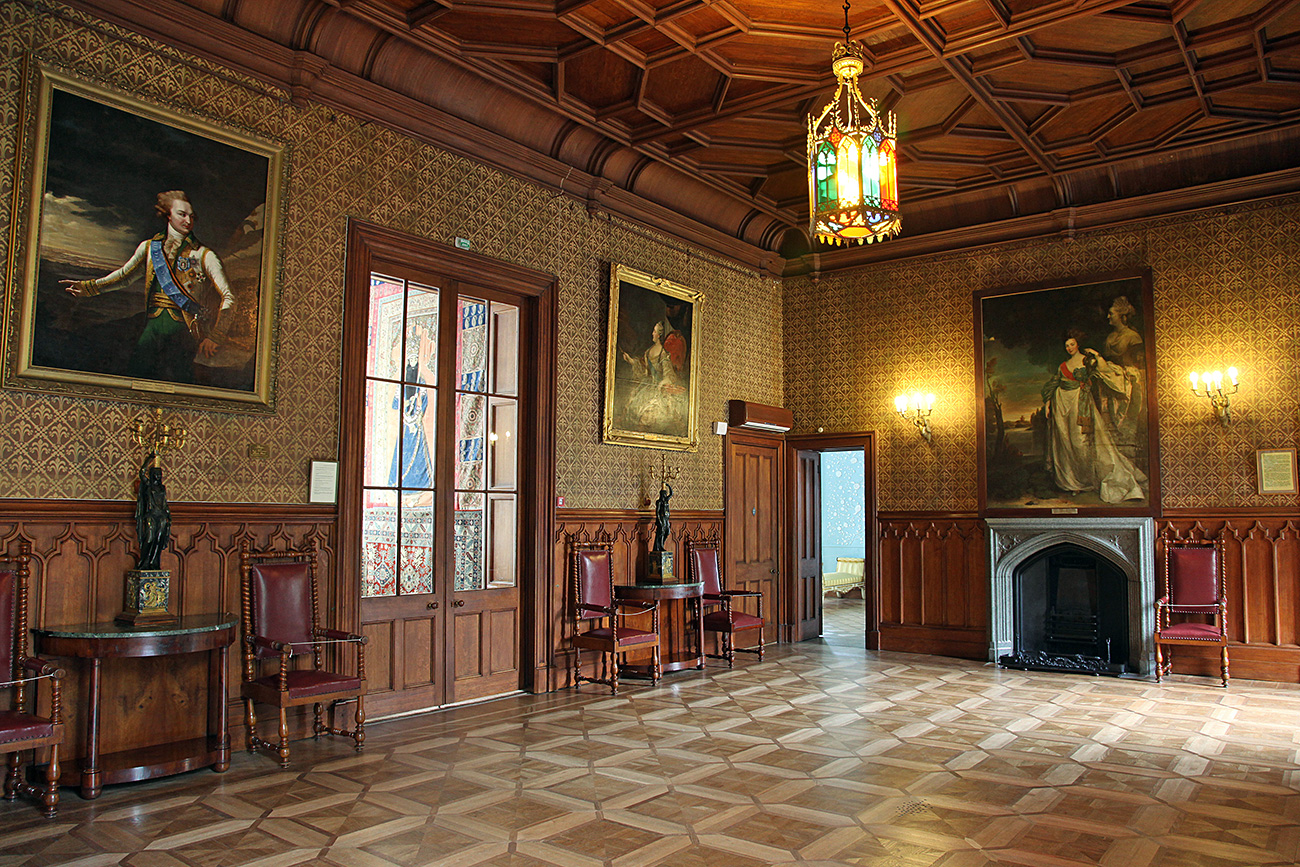 The Hall. Source: Legion Media
The Hall. Source: Legion Media
The Blue Room is decorated with stucco ornamentation inspired by plants and furnished in the style of Russian classicism.
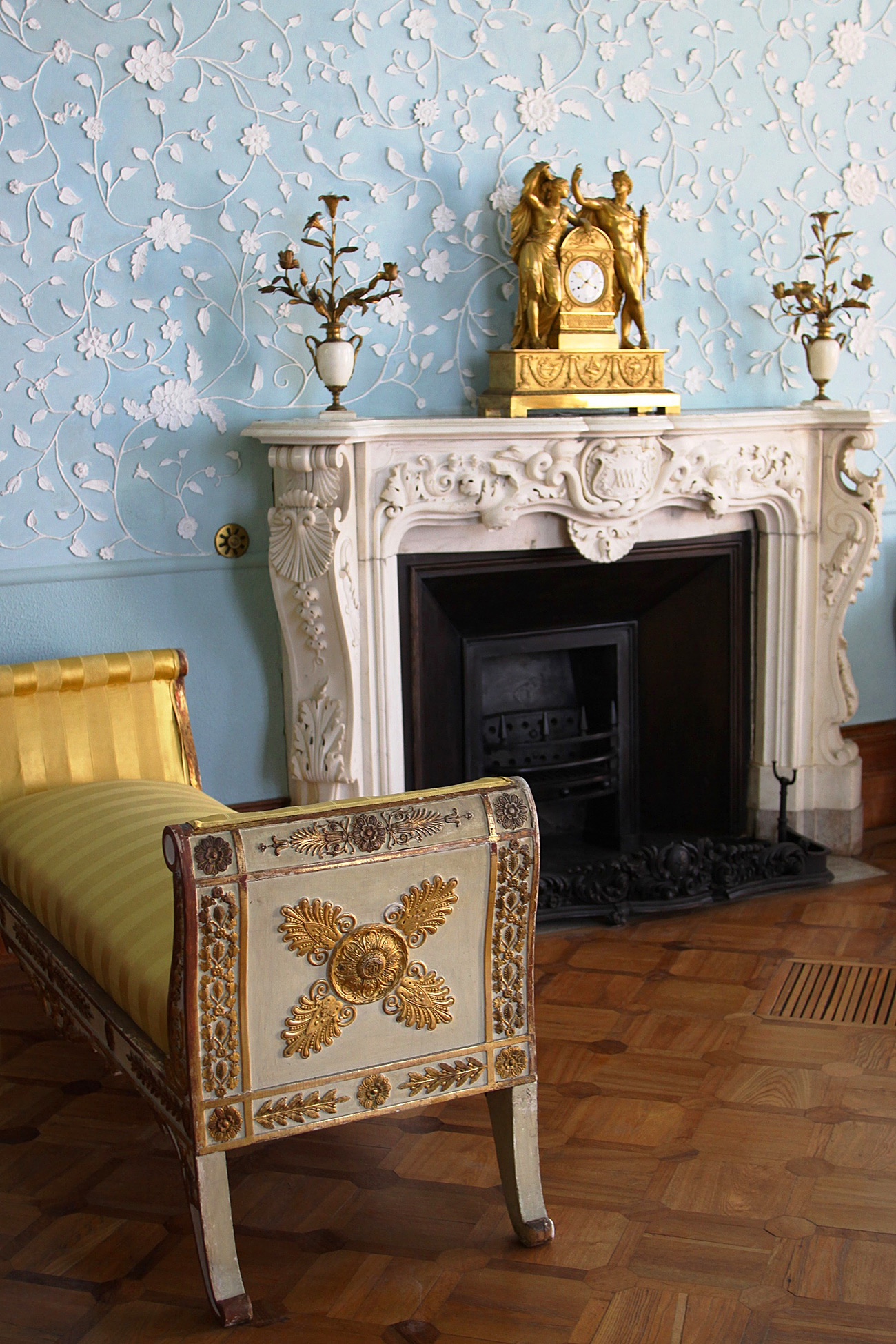 The Blue Room. Source: Legion Media
The Blue Room. Source: Legion Media
The Grand Dining Room transports visitors to the chivalrous era of a medieval castle.
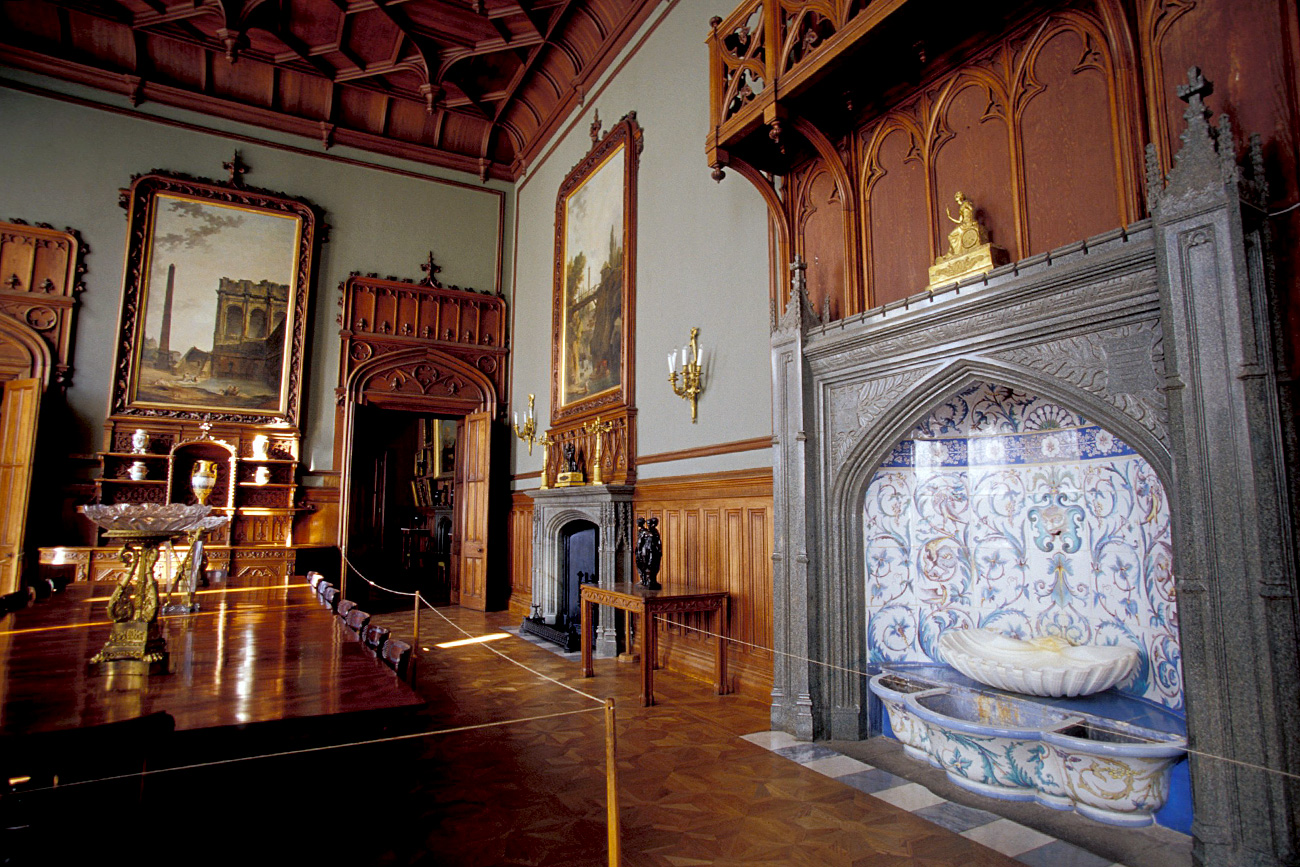 Dining room c. 1841, tile fountain. Source: Danita Delimont/Global Look Press
Dining room c. 1841, tile fountain. Source: Danita Delimont/Global Look Press
In the Winter Garden, among the exotic greenery, there are numerous marble statues. The kitchen in the service wing even has a direct prototype – the kitchen of the Royal Pavilion in Brighton, built several years earlier.
6. The first owner of the palace was a notable figure in Russian history
Count Mikhail Vorontsov was a very prominent political and military figure of his time. His father was a well-known diplomat and Russian ambassador in London.
Vorontsov took part in all the major military campaigns of the first half of the 19th century, was a hero of the Russian-Turkish and Napoleonic wars and took part in the capture of Paris in 1814. Unlike many senior military officials, he personally participated in battles and compiled a new set of rules for his subordinates in which corporal punishment was abolished for the first time. As viceroy in southern Russia and the Caucasus, he did a lot for the prosperity of these regions. The best of his likenesses was painted by brilliant English portraitist Thomas Lawrence and is now in the Hermitage museum in St. Petersburg.
 Mikhail Vorontsov by Thomas Lawrence. Source: The State Hermitage Museum
Mikhail Vorontsov by Thomas Lawrence. Source: The State Hermitage Museum
7. The palace was used as a residence for Churchill and a dacha for NKVD officials
Between Feb. 4 and 11, 1945, during the Yalta Conference at which the leaders of the USSR, the U.S. and Great Britain decided the fate of post-war Europe, the Vorontsov Palace was the residence of Winston Churchill and the British delegation.
 Yalta's conference (1945). During a sitting in Vorontsov's palace. Source: Global Look Press
Yalta's conference (1945). During a sitting in Vorontsov's palace. Source: Global Look Press
For a decade after the war the palace was administered by the NKVD [Soviet secret police] and was used as a state dacha. The most important state officials responsible for domestic security under Stalin regularly spent their holidays here: Lavrenty Beria, Lazar Kaganovich and Vyacheslav Molotov. In 1956 the palace was turned into a museum.
Read more: The last Romanov residence: 9 facts about Livadia Palace
If using any of Russia Beyond's content, partly or in full, always provide an active hyperlink to the original material.
Subscribe
to our newsletter!
Get the week's best stories straight to your inbox